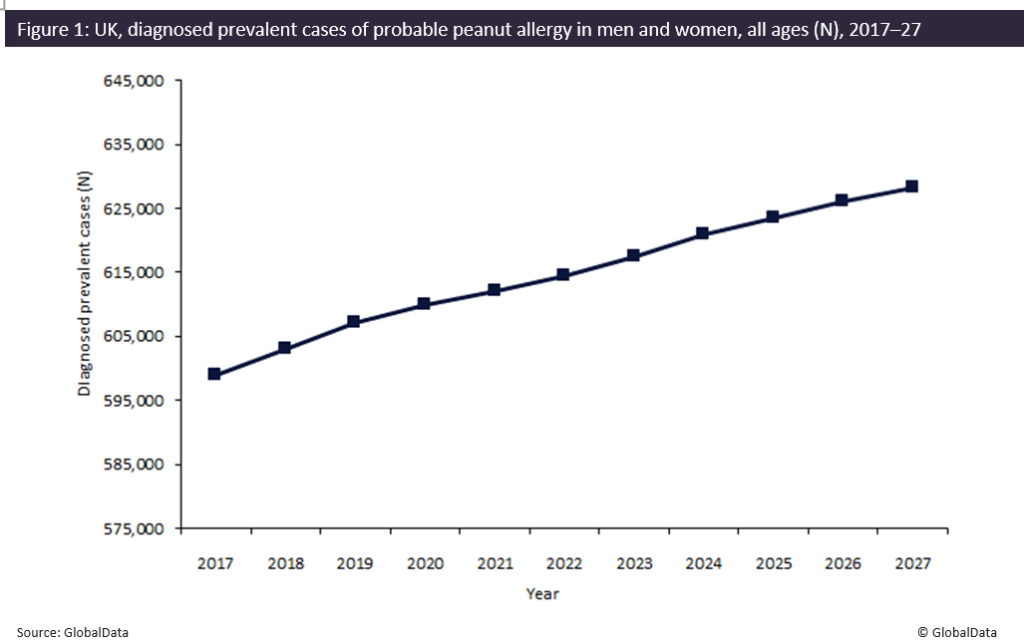According to the most recent European Health Interview Survey for 2019 to 2020, allergy is the most common chronic health condition in the UK, affecting 30.4% of men and 36.0% of women.
One major example is food allergies, which occur when the body’s immune system reacts negatively to food. Though almost any food can trigger an allergic reaction, they are most frequently caused by cows’ milk, eggs, peanuts, tree nuts and shellfish. Recent studies have suggested that food allergies have become more common, which is a major concern as severe allergic reactions can be life-threatening. In research published in September 2024 in Lancet Public Health, Tuner and colleagues reported that the incidence of probable and possible food allergy in England increased between 2008 and 2018, with the incidence of probable food allergy more than doubling during that same period.
To measure the incidence of food allergy, the study utilised data from the Clinical Practice Research Datalink Aurum, a large UK primary healthcare database that is representative of the English population. This data was then linked to the Hospital Episode Statistics Admitted Patient Care database, which contains information related to hospital admissions. In the study, food allergy was defined based on three categories: possible food allergy (having diagnostic codes for food allergy/food hypersensitivity but not necessarily representative of food allergy), probable food allergy (having diagnostic codes that imply a high likelihood of a food allergy diagnosis), and probable food allergy with adrenaline autoinjector prescription (patients with probable food allergy who have been prescribed a device used for treating severe allergic reactions).
Severe allergic reactions can be life-threatening
Of the 7,627,607 individuals in the 2018 cohort, 150,018 had a possible food allergy, 121,706 had a probable food allergy and 38,288 had a probable food allergy with adrenaline autoinjector prescription. From 2008 to 2018, the incidence of possible food allergy increased from 101.4 individuals per 100,000 person-years to 174.0 individuals per 100,000 person-years. The incidence of probable food allergy also increased, from 75.8 individuals per 100,000 person-years in 2008 to 159.5 individuals per 100,000 person-years in 2018. This increased incidence was especially pronounced from 2012 to 2014, and from 2014 onwards it plateaued. However, the incidence of probable food allergy with adrenaline autoinjector prescription did not increase, which may be because the increased incidence was greatest in children who usually are not prescribed adrenaline autoinjectors unless they are at risk of a severe allergic reaction.
This study not only provides insight into the health burden of food allergy in England, but also illustrates how trends in food allergy development have changed. Though it found an increase of possible and probable food allergy for England from 2008 tp 2018 which may be a cause for concern, the fact that incidence from 2014 onwards plateaus is of particular interest, and more research is needed to validate these findings. Interestingly, GlobalData epidemiologists predict an increase in the number of diagnosed prevalent cases of probable peanut allergy for men and women in the UK, from 620,000 in 2024 to 630,000 in 2027.

How well do you really know your competitors?
Access the most comprehensive Company Profiles on the market, powered by GlobalData. Save hours of research. Gain competitive edge.

Thank you!
Your download email will arrive shortly
Not ready to buy yet? Download a free sample
We are confident about the unique quality of our Company Profiles. However, we want you to make the most beneficial decision for your business, so we offer a free sample that you can download by submitting the below form
By GlobalData




